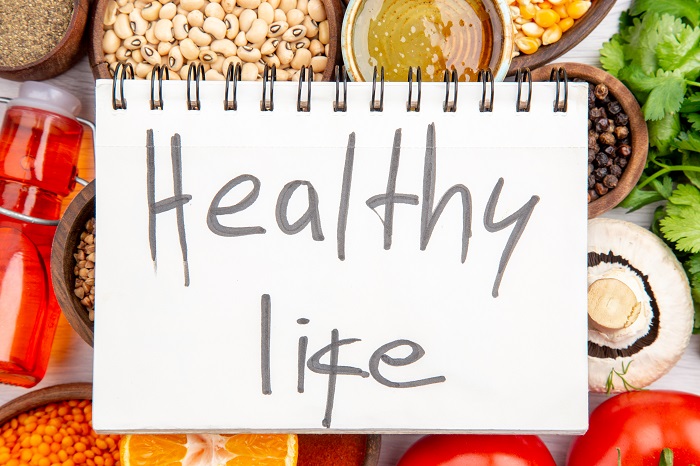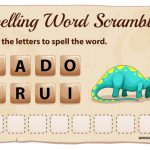We are bombarded with articles and images on the importance of good health and nutrition, kids’ food, maintaining a balanced diet, eating healthy, and taking care of our bodies. Everywhere we look, there is some reminder that there is no escaping it, and the fact remains that it is solely our responsibility to take care of our bodies. However, the same rule doesn’t apply to our children. As adults and parents, we commit to taking care of their nutrition and health.
As easy as it may sound, the reality is far from it. Family lives have become busier, and even children have hectic schedules. All this makes it difficult to have fresh home-cooked food for every meal, and we rely heavily on convenience or takeout foods. Our children’s nutrition also suffers as their diet contains packaged, processed, and easy-to-cook meals. This can harm your child’s health. Children learn how to get the best healthy nutrition tips for kids and maintain a balanced diet as part of their everyday routine at EuroKids for kids preschool admission.
Why Fast/ Junk Food is Bad for Kids
- Many contain high amounts of sodium, corn syrup, sugars, and sweetening agents.
- They contain artificial flavors, flavor enhancers, artificial colors, and preservatives that can damage our health.
- Foods like ready-to-eat cereal that are high in sugars can give us a sugar rush and then cause our body to crash and even cause mood swings, all of which also affect our mental health.
- Fast or junk food is also often deep fried and contains saturated and trans fats. Excessive consumption of these can cause heart problems and other illnesses.
- The main focus of fast food, junk food, and takeaway food is flavor. Most of these foods lack fiber and are nutritionally valueless. This can lead to health problems like obesity, digestive issues, and heart problems, and even cause diabetes.
- Once children get used to easy instant meals like these, it becomes tough to break the habit as they grow, and the same unhealthy eating habits continue into adulthood.
Healthy foods for kids are essential as they are still growing. Their bodies have higher nutritional needs for optimal growth and development, and a deficiency in any one of their nutrients will cause lifelong problems. E.g., A diet low on calcium and vitamin D will cause problems in bones and teeth, fewer proteins will hamper the development of muscles, less vitamin A will inhibit their eyesight, and so on.
Maintaining Healthy and Balanced Nutrition for Kids has Many Benefits
- Healthy foods for kids provide them with a steady and optimal flow of energy throughout the day, which is required to pay attention, focus, and concentrate on school and other activities during the day.
- Excessive sugar and processed foods give children a sugar rush and a spike in energy levels, and then suddenly, there is a dip, which leads to mood swings. When Children’s nutrition is devoid of this, they have even moods and are mild-mannered.
- Nutritious foods help kids maintain a healthy weight, and a well-balanced diet keeps obesity and underweight problems at bay.
- Certain foods need to be a part of children’s nutrition to help the brain grow, and they should contain Vitamins D and E, Omega 3, and Folate. Foods like Green Leafy vegetables, eggs, fish, nuts, seeds, and yogurt helps the brain stay sharp and enhances its development.
- Healthy foods for kids help prevent mental health disorders, including anxiety, depression, and ADHD.
If you’d like to learn more about the importance of early childhood development. It is necessary to teach good eating habits from childhood, as they will remain with you well into adulthood. Though it may seem difficult initially, choosing healthier food alternatives will soon become part and parcel of your life.
Remember These Steps on Your Path to Good Health
When teaching children good eating habits, it is necessary to follow a routine that is simple enough for them to follow on their own as they grow older and even into adulthood. You can start with these stepping stones.
Eat Breakfast
The time gap between dinner and breakfast is around 8 hours. The body needs fuel to be productive on an activity-filled day.
- Eat a breakfast high in proteins and complex carbohydrates that will keep you full longer and provide you with the energy required to do your tasks.
- Oats, eggs, whole wheat or multigrain sandwiches, and fruit, are an excellent way to start your day.
Eat Meals as a Family
When eating meals as a family becomes a priority, it becomes a part of a routine.
- Children thrive on routine, and being together helps them feel safe and secure.
- This is a great time to bond as a family. Talking and joking as a family and taking an interest in each other’s life help build strong family bonds.
- It is an excellent way to monitor what your child is eating and how much.
- Moreover, apart from good eating habits, they can also learn table manners by observing you.
Involve your Children
Involve your child in meal planning, shopping, and preparing for a meal.
- Talk to them about the nutritional value and why it is healthy. If children are involved, they may be open to trying out new things.
- You could even start a small kitchen garden or even a herb garden.
Make the Change Gradually
If you’re ready to make a change towards making healthy foods for kids, then do so gradually.
- Instead of white bread, change to whole wheat or multigrain bread,
- Replace ice cream with homemade frozen yogurt.
- Make the change from store-bought fizzy drinks to homemade juices and sherbets.
- Instead of using whole-fat buffalo milk in everything, you can use low-fat, skimmed milk or cow’s milk for most of your needs.
- Switch from processed white sugar to jaggery, honey, or raw brown sugar.
Click here to know more about the best health drinks for kids.
Restrict Sugar Intake
Many foods like milk, fruits, grains, and some vegetables contain sugar in their natural form. They should be included in the nutrition for our kids as the amount of sugar present in it is enough as part of their daily intake. So we can make a change by.
- They are consuming less ketchup, readymade canned soups, fast foods, doughnuts, iced cakes and cupcakes, readymade sugary cereals for kids, and so on. These can be kept as treats to be had on rare occasions.
- Modify recipes that require sugar; you can cut down the sugar used in the recipe or eliminate it together, especially if the topping you use is sweet, as in the case of pancakes or waffles. You can enhance your kid’s nutrition by replacing or reducing the amount of sugar with an overripe banana or dates, which are sweet, like in ‘sheera’ or when making cakes and muffins.
- Feast on fruit- Fruits contain reasonable amounts of natural sugars, which can satiate most sugar cravings. So replace unhealthy desserts with fresh fruit or fruit-based desserts.
Choose the Correct Type of Fats
Fats are essential to Children’s nutrition. It is required to insulate specific body organs, skin, and many more uses. Fats also help in the absorption of certain minerals, and they help keep our stomachs full. While our kid’s nutrition should contain fats, the type of fats they consume could be harmful. Good fats are unsaturated fats, and these include.
- Monounsaturated fats – Olive oil, peanut oil, canola oil, Avocadoes, nuts like almonds, hazelnuts, pecans, and seeds like pumpkin and sesame are examples of monounsaturated fats.
- Polyunsaturated fats- foods with a high amount of polyunsaturated fat include walnuts, sunflower seeds, flax seeds, corn oil, soybean oil, safflower oil, and omega-three fatty acids found in fish such as salmon, mackerel, herring, sardines, and so on.
Unhealthy fats are the trans fats found in vegetable shortening, margarine, and fried and baked food items. Many packaged foods also contain ‘partially hydrogenated’ vegetable oils, which are bad for you and should be consumed only in minimal amounts.
Let’s make Fruits and Veggies More Appetizing
The first step would be to eliminate and stop buying unhealthy snacks like potato chips, cookies, and cakes. If these aren’t around, your child has to look for alternatives like cucumber and carrot sticks with Hummus or guacamole or apple slices with homemade peanut butter.
Why not try these Nutritious Food Ideas for Kids
- Keep fresh fruits or even dry fruits and nuts handy- if these are kept where the child can see them, then it acts as a reminder for them to eat them. Fruits like Bananas, apples, or pears are a favorite snack for many children as it is a quick grab and go snack that they can eat while on the go.
- Get kids involved- when shopping, allow your child to choose what fresh fruit or vegetable they’d like to eat or maybe select a dip they’d like to try with their vegetables. Teach them to make different sandwiches or finger foods like fruit kebabs or a mixed fruit salad, and they might be willing to eat a healthy snack if they make it themselves.
- Get creative and think outside the box- Vegetables and fruit need not be consumed alone. For various flavors, fresh fruit can be added to pancakes, smoothies, and even oats. You can hide vegetables in parathas, pasta, and pizzas and make crunchy tikkis for the kids to enjoy.
- Eat the rainbow- Healthy foods for kids need not be boring. Children love colors, so try to add as many colors to your child’s plate as possible, remembering to keep the portions small so they can handle a full scale. You can add a variety of textures and tastes to their food. You can be as creative as your imagination lets you.
Things to Keep in Mind
While there are numerous ways and ideas for making nutritious foods for kids or getting your child to eat healthily, the best tip would be to keep it simple, not stress too much about it, handle it slowly and gradually, and encourage healthy habits.
Being a good role model
Children learn best by imitation, so if you eat healthily and show that you’re enjoying the food, your child will do the same.
Start Young
Children start showing food preferences from a very young age, so from the beginning itself, slowly and gradually introduce them to a variety of foods with different textures as well and continue even when they are older. Children often start enjoying foods they didn’t like when they were younger.
View your Kid’s Nutrition in Totality
Instead of worrying that your child is not eating a particular food item, try other sources of foods that have a similar nutritional value. Avoid focusing on a meal as a whole instead, look at what they are eating throughout the day and strike a balance. Stay away from convenient packaged and processed foods as much as possible.
Change your Focus
Try focusing on foods your child can eat, enjoy eating, and should be eating rather than only focusing on what they should not be eating. If your kid’s nutrition is healthy and eating well, then the occasional “treat” is okay.
Avoid Force Feeding
Give your child smaller portions of food, especially when introducing new foods, and encourage them to serve themselves more if they are still hungry. This will also reduce food wastage.
Don’t use Food as a Reward
Instead, use hugs, kisses, and words of praise to reward your child. This will prevent your child from using food to cope with emotions and feelings.
Limit Screen Time
When screen time is limited, children will find other ways to entertain themselves and move on to other things rather than just sitting in front of a screen. Even eating mindlessly while watching TV should be discouraged as your child will eat much more than they should and may feel sick.
Have Snacking Boundaries
While snacks are a way to keep hunger pangs away between meals, they should in no way be used to replace a meal. Maintain a regular snack time and teach your child to ask before eating an additional snack portion. Also, please refrain from eating directly out of the bag as they will end up overeating.
Healthy eating is not just a goal. It is a lifestyle choice in which everybody needs to participate. It is an achievable slow, and gradual process. At Euro kids, we understand and respect the need for healthy foods for children, which is why there is a fixed menu designed by our in-house dietician and nutritionist, keeping in mind the nutritional needs of the children as well as their desire to eat something different every day. So why not click here and visit a EuroKids center closest to you and see for yourself the healthy eating habits of the children at the center?
Visit EuroKids for a more engaging blog.















